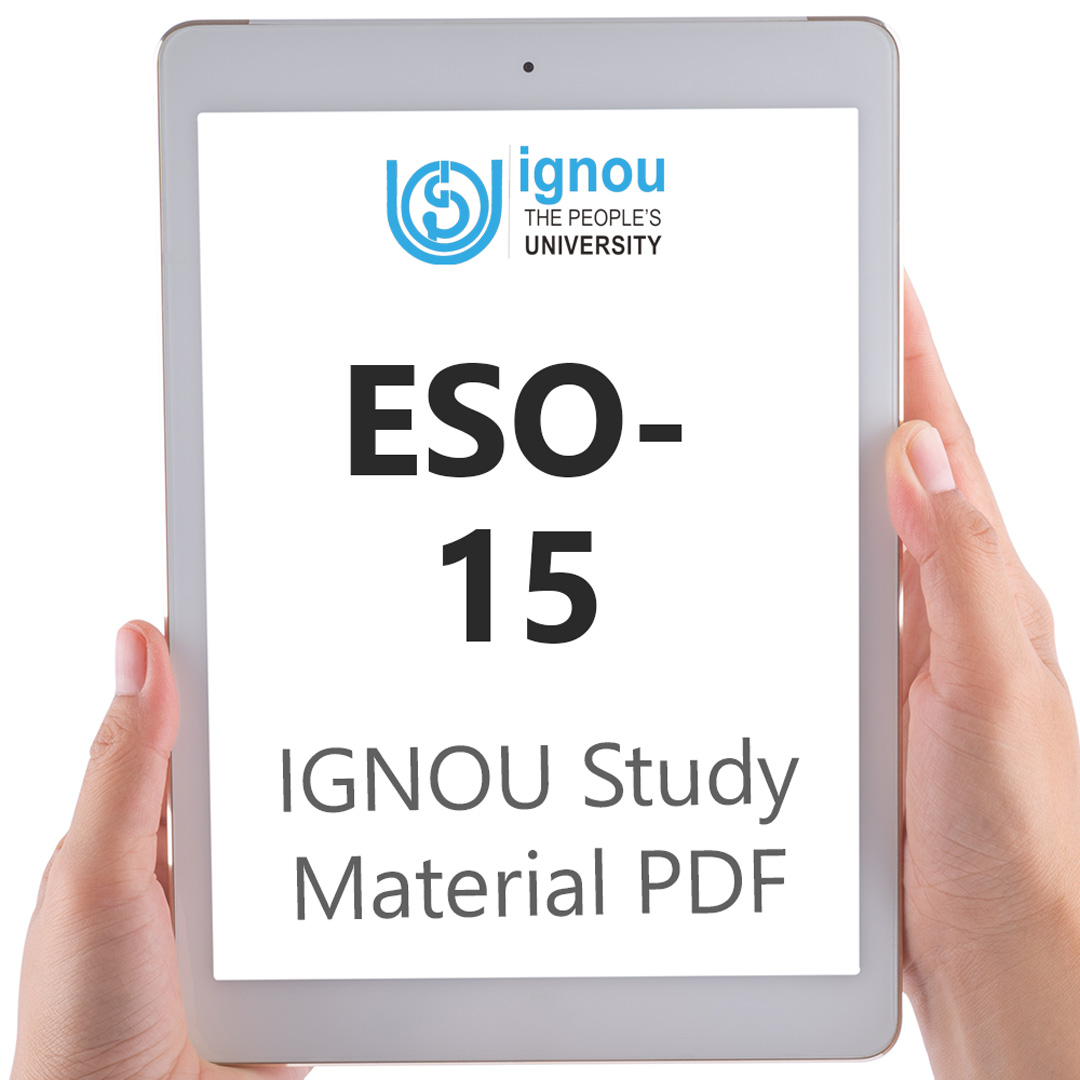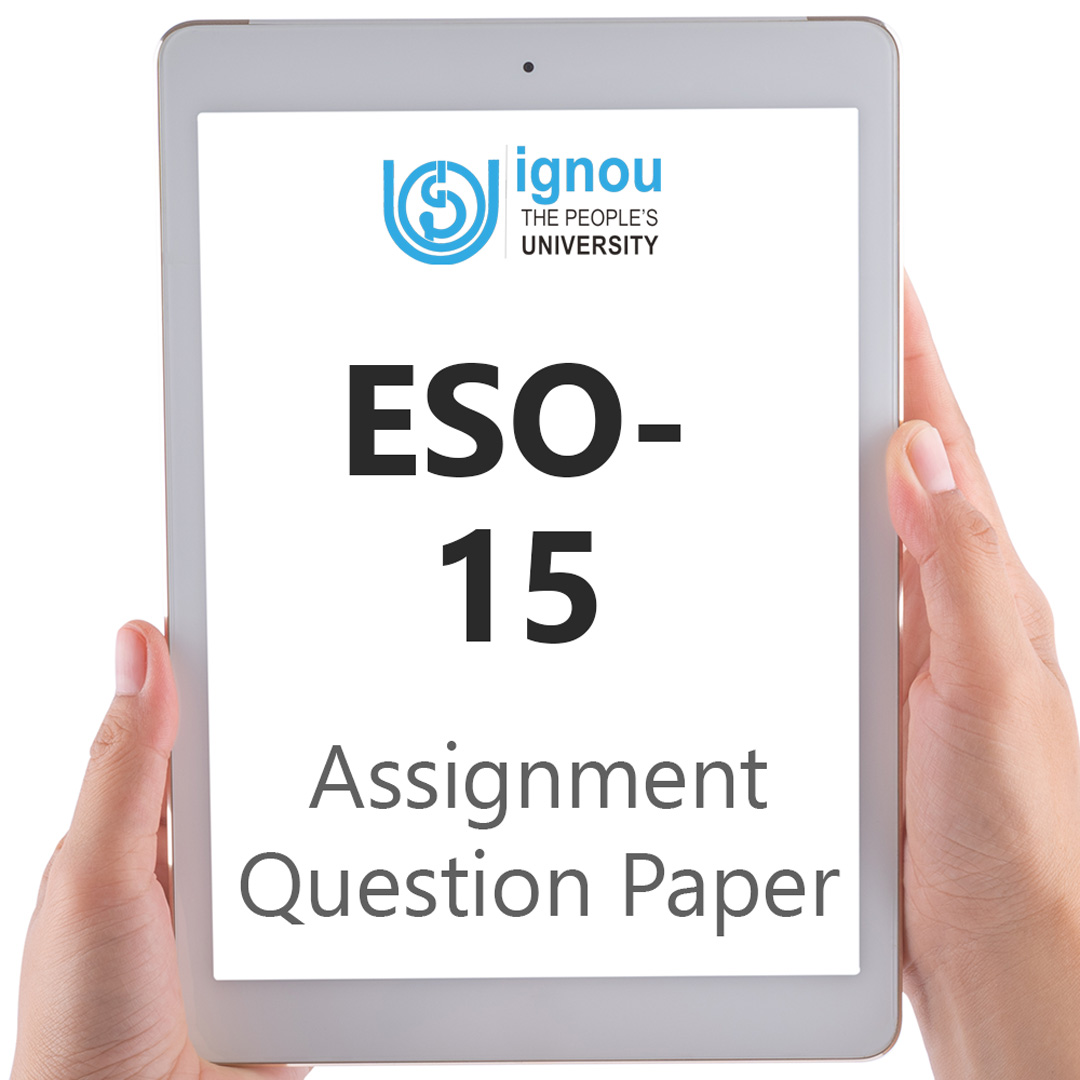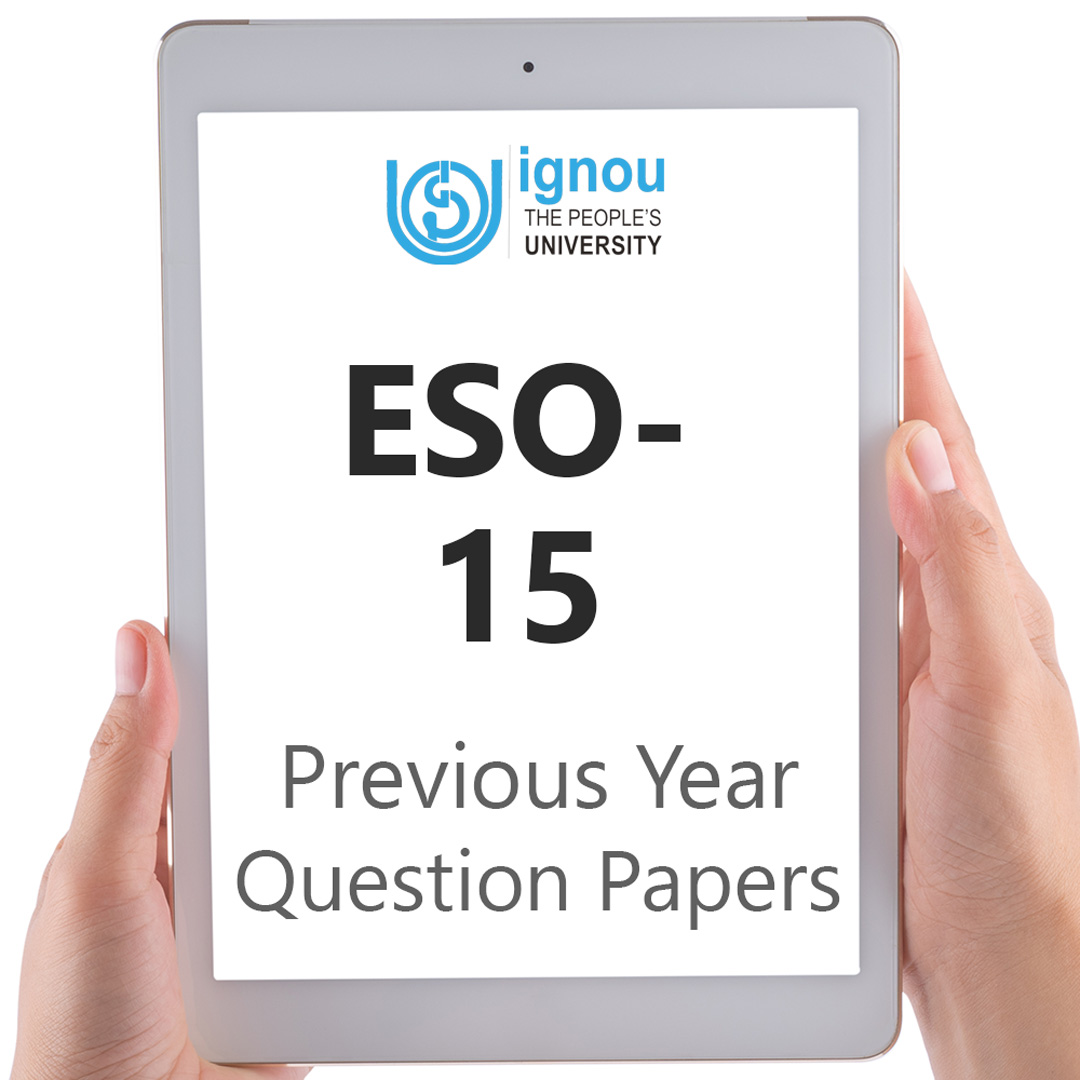If you are looking for ESO-15 IGNOU Solved Assignment solution for the subject Society and Religion, you have come to the right place. ESO-15 solution on this page applies to 2022-23 session students studying in BTS, BDP courses of IGNOU.
ESO-15 Solved Assignment Solution by Gyaniversity
Assignment Code: ESO-15/AST/TMA/2022-23
Course Code: ESO-15
Assignment Name: ;Society and Religion
Year: 2022-2023
Verification Status: Verified by Professor
Maximum Marks: 100
Answer all the questions.
Section-I
Answer the following questions in about 500 words each. Marks
Q1. Explain the evolutionary theories of religion. 20
Ans) There are distinct stages in this rectilinear progression, starting with the "origin" and ending with the current level of human civilisation. The majority of evolutionists investigated the origins and development of social institutions and civilization among the world's aboriginal populations. However, they did not share a common theory of social development and instead offered a wide range of development models that human societies were thought to have gone through. The early nineteenth century saw the final development of the evolutionist perspective on human cultures. Numerous academic fields were greatly impacted, especially physics, philosophy, and anthropology/sociology. The search for the "origin" of society, religion, and other social institutions was started by anthropologists under the influence of evolutionism. The anthropological theories pertaining to the emergence and development of religion came to be associated with the term evolutionism.
Positivism
Positivism refers to adherence to scientific principles. It relates to the belief that sociology, like other natural sciences, may provide scientific explanations for social phenomena. Positively inclined academics frequently attempted to draw comparisons between religion and science. They believe that when religion is examined scientifically, it is revealed to be irrational. Positivists frequently believed that religion would become less valuable as more people began to believe in science, which is based on experiment and sensory awareness. They said that religion was eroding as a result of growing industrialization. We provide two researchers with positivist presumptions as examples. He claimed that among the apes, this technique was commonplace. Following this phase, polytheism and ultimately monotheism emerged. The famous book The Origin of Species by Charles Darwin, which was released in 1859, caused a revolution in the biological sciences. Prior to this, Spencer argued in his essay Progress: Its Law & Cause that as science developed and a society based on contracts emerged, the god-centred religions would become extinct.
Intellectualism
Intellectualism is the practise of using logic to explain things. According to academics that adopt an intellectualist stance, religion is a person's reasoned or rational reaction to the world around them. In other words, religion is a primitive explanation system that makes use of supernatural beings. According to intellectualism-based evolutionism, religion is a matter of knowledge. Intellectualists in the nineteenth century discounted the emotional component of religion as a superfluous addition. These intellectuals faced criticism for their biased view of religion later in the 20th century. Despite this legitimate critique, we may point out one thing in their favour: they were the first to show that the aboriginal people were not as stupid and godless as missionaries and explorers had claimed. Even though their attempts to explain the natural events were somewhat clumsy and inaccurate, the intellectualists strove to demonstrate the rationality of the prehistoric people.
It is important to keep in mind that intellectualism was a curious synthesis of positivism and evolutionism. Anthropologists and sociologists of the twentieth century severely criticised them. As time went on, these hypotheses were criticised, disproved, and alternatives to this line of thinking about the origins and practises of religion in society were offered.
Q2. What are the similarities and differences between Bhakti and Sufism? 20
Ans) Much of what the Sufis preached was comparable to the bhakti concept of focusing on a God and the importance of sacred music and song, as you may have already noted. It is thought that this interplay between the two resulted in the development of a mediaeval mysticism that was free of sectarian or orthodox rituals and rejected in particular atrocities and practises involving caste. Khwaja Muinuddin Chisti, who arrived in Delhi in 1193 and resided in Pushkar in Ajmer, was the first Sufi teacher to travel to India. Both Muslims and Hindus were among his devotees. We are all familiar with the "Urs" at his dargah in Ajmer, where throngs of devotees still travel to make pilgrimages.
Growth of Medieval Mysticism
Ramananda, a Ramanuja disciple himself, played a significant part in the development of mediaeval mysticism. Divisions, questioned conventional ceremonies, and embraced the Hindu philosophy of jnana, or knowledge, meditation, and devotion, or bhakti. Ramananda opposed caste divisions, questioned traditional rites, and accepted the Hindu philosophy. Twelve of his many disciples, who belonged to a low caste, were among his most influential followers. The most well-known of their followers was Kabir, a Muslim weaver's son. The stringent monotheism of Islam and his opposition to the caste system are thought to have persisted in spite of his early abandonment of the Muslim faith. He highlighted the bond between a person, God, and his instructor or guru since he considered religion as a personal issue. He said that Rama and Allah were one and the same, combining parts of the Sufi and bhakti traditions in himself.
Sufi-Bhakti Interaction
The interplay between the Sufi and bhakti traditions gave Kabir and Nanak's lives a distinctive flavour. Kabir and the Sufis had a similar level of intellectual organisation in addition to the mystical quality of his renditions. Whether correctly or incorrectly, Kabir is referred to in the Khazinat al-asfiya by Ghulam Sarvar Lahori as a Sufi and as having ties to the Chistis. However, scholars have recently argued that this offers a chronological error. He is said to have travelled to several Sufi centres and even engaged in discussion with Sufi saints according to his writings. Nobody contests, however, the important role that his dohas had come to hold. Scholars think that Guru Nanak also had contacts with Sufi instructors or Shaikhs, with one encounter—with a Shaikh Ibrahim of Pakpattan near Multan—being accepted as real.
Bhakti-Sufi Teachings
It's crucial to keep in mind that the Sufis and bhakti saints had a mutual relationship, and both groups were influenced by the bhakti tradition. The Sufi tradition also produced saints like Shah Karim and Shah Inayet from the 17th century, whose teachings made little distinction between the divine as Allah or Rama or Hari, similar to what Kabir sought to say, and revealing the influence of the bhakti tradition. Hence, in addition to this significant similarity in terms of the method of devotion and its expression, we find that the Sufi tradition also produced its saints like the Shah Karim and Shah Inaye.
Section-II
Answer the following questions in about 250 words each.
Q3. Explain Weber’s understanding of the prophet. 12
Ans) A "prophet" is a wholly unique charismatic carrier of a message that is either a religious instruction or a heavenly commandment. No fundamental distinction will be made between a "creator of religion" who offers entirely new discoveries and a "renewer of religion" who finds a new meaning in an old revelation, real or imagined. The relationships between the two categories are intertwined. In any instance, the emergence of a new religious group need not be the product of prophetic prophecy; rather, it may occur from the actions of reformers who are not prophets. Neither should we worry about the issue of whether a prophet's followers are more drawn to him personally—as was the situation with Zoroaster, Jesus, and Muhammad—or to his message—as was the case with Buddha and the prophets of Israel—in this context.
Priest and Prophet
For our purposes, the deciding factor separating the priest from the prophet is the "personal" call. First of all, the prophet uses charisma to announce fresh revelations, whereas the priest upholds a revered tradition. The fact that nearly no prophet has emerged from the priesthood is not an accident.
Magician and Prophet
On the other hand, the prophet wields all of his authority through personal talents, just like the magician. The prophet, as opposed to the magician, issues meaningful revelations, and his mandate is to instruct or issue commands rather than perform magical acts. The distinction is ambiguous on the outside. In such cases, the magician acts as the sole announcer of divination. At this point, revelation serves continuously as a dream or oracle.
Q4. Discuss the social significance of pilgrimages. 12
Ans) We will first look at Turner's thesis on pilgrimage as a social process, where he highlights the communities in pilgrimages and their liminal (see Key terms) character, in order to gain a thorough knowledge of the social relevance of pilgrimages. The relationship between pilgrimage and other facets of social life, such as social and cultural integration, educational, economic, political, and other types of activity, will next be discussed.
Turner's Thesis
By social status and role, people are distinguished from one another and connected in a frequently hierarchical political system. Communities, in contrast, show themselves as a homogeneous group of equals who are capable of complete and rapid recognition. Communities "is almost universally believed to be sacred or 'holy,' maybe because it violates or dismantles the rules governing structured and institutionalised relationships and is accompanied by feelings of unparalleled potency." Communities form where social structure does not, according to Turner (1974a: 203), and serve to reinforce the bonds of fundamental oneness that form the foundation of the social order.
Pilgrimage and Socio-cultural Integration\
India is highly recognised for its diverse cultures, regions, languages, castes, and rice varieties. The idea of the Indian people's fundamental unity has been communicated in this area as well through the use of pilgrimages. M.N. Srinivas (1962: 105) notes this and states, "The concept of Religion unity of India is primarily a religious one." There are well-known pilgrimage sites throughout the nation. Even in pre-British times, when communication and transportation were extremely limited, pilgrims would occasionally walk hundreds of miles through dangerous regions through which dacoits and dangerous animals prowled, enduring disease and deprivation while doing so in order to reach the holy sites and gain religious merit. Pradakshina, or a clockwise circumambulation of India's territory, was the main pilgrimage.
Q5. Discuss the social context of secularisation process in Europe . 12
Ans) When Europe become secular, society was awakening from its mediaeval slumber and embracing a host of brand-new changes. The field of rational-empirical research was expanding. The Renaissance in the arts and sciences coexisted with the Reformation in the church.
Renaissance
Many people in Europe who could read and write between the 14th and 16th century started to pay less attention to what their rulers and priests told them and started to come up with new ideas on their own. Additionally, they developed an interest in the arts and learned about the Greek and Roman civilizations. The Renaissance, which is a French word meaning "rebirth," was an exciting period in history that resulted from this new way of thinking and rediscovery of prior knowledge.
Growth of Science
As was alluded to previously, the church wielded a stifling influence over mediaeval European culture. Even education was primarily of the religious kind. The rational inquiry process started during the Renaissance. It identified a topic for description and criticism in the field of education.
Expansion of Trade and Commerce
The 15th century AD also saw the transition from a stable and localised economy to a dynamic, global one. The European governments' initiative to build and strengthen their economic and political might was partially responsible for this increase in trade. the Portuguese monarchy Discoveries, trade, and conquest in foreign lands were funded by Spain, Holland, and England. Britain and Holland followed Spain and Portugal, and soon India, Southeast Asia, Africa, the West Indies, and South America were under the economic control of these nations.
Q6. Explain the origins of Veerashaivism. 12
Ans) Veerashaivism disbelieves in the validity of the Vedas. The most significant texts of Veerashaivism are the free verse religious songs known as Kannada vachanas. They do not acknowledge the Brahmins' dominance. The Veershaivas practise the prohibition of child marriage, open marriage for widows, burial over cremation, and abandonment of the main Hindu rituals for purging ceremonial impurities. The astavarna, or eightfold sacrament, has a different spiritual advisor for each household. The early history is hazy, but it is evident that they first appeared as a reformist Shaiva sect on the Maharashtra and Karnataka border in the middle or around the end of the twelfth century. The Dravidians' response to Brahmanic dominance was this sect.
Although Basava is regarded as the founder of Veerashaivism, the literature on the religion written in Kannada and Sanskrit do not mention him by that name. Another reformist that has been mentioned is Ekanta Ramayya. The Jains were being attacked by both commanders. One of the main symbols of Veerashaivism is the lingam, a representation of Lord Shiva that is worn around the neck or on the upper arm in a silver casket. The family's guru claims to be descended from the panchacharya. He fastens the linga to the infant and drapes vibhuti over it. The mantra, which is an obeisance to Lord Shiva, is taught and worn as a rudraksha necklace. The youngster is offered to Lord Shiva as a Jangama. The child receives prasad while the Jangama is fed. When the youngster is eight or ten years old, a somewhat different ceremony is repeated.
Section-III
Answer the following questions in about 100 words each.
Q7. What do understand by the concept of cult? 06
Ans) A social group that is identified by its peculiar religious, spiritual, or philosophical beliefs and rituals, or by its shared interest in a certain person, thing, or objective, is referred to as a "cult" in modern English. This understanding of the phrase is debatable and vaguely defined, with varying definitions in academia and popular culture. It has also been a persistent point of disagreement among academics from various disciplines of study. An ancient use of the term refers to a collection of religious rituals that are common in the culture, connected to a certain person, and frequently associated with a specific location.
Q8. What are life-cycle rituals? 06
Ans) A life cycle ritual is a ceremony that is held to commemorate a person's changing biological or social status over the course of their lifetime. These customs can be found in many societies and are frequently based on local customs. The religious importance of life cycle rituals may also come from many ideas and beliefs. A life cycle ritual is best described as a ceremony that a person goes through as they transition from one stage of life to another. The phrase might be used interchangeably with "rite of passage," which is how Arnold van Gennep defined it in his 1909 book "Rite of Passage." despite being more directly related to significant biological life events like birth, adolescence, marriage, and death.





